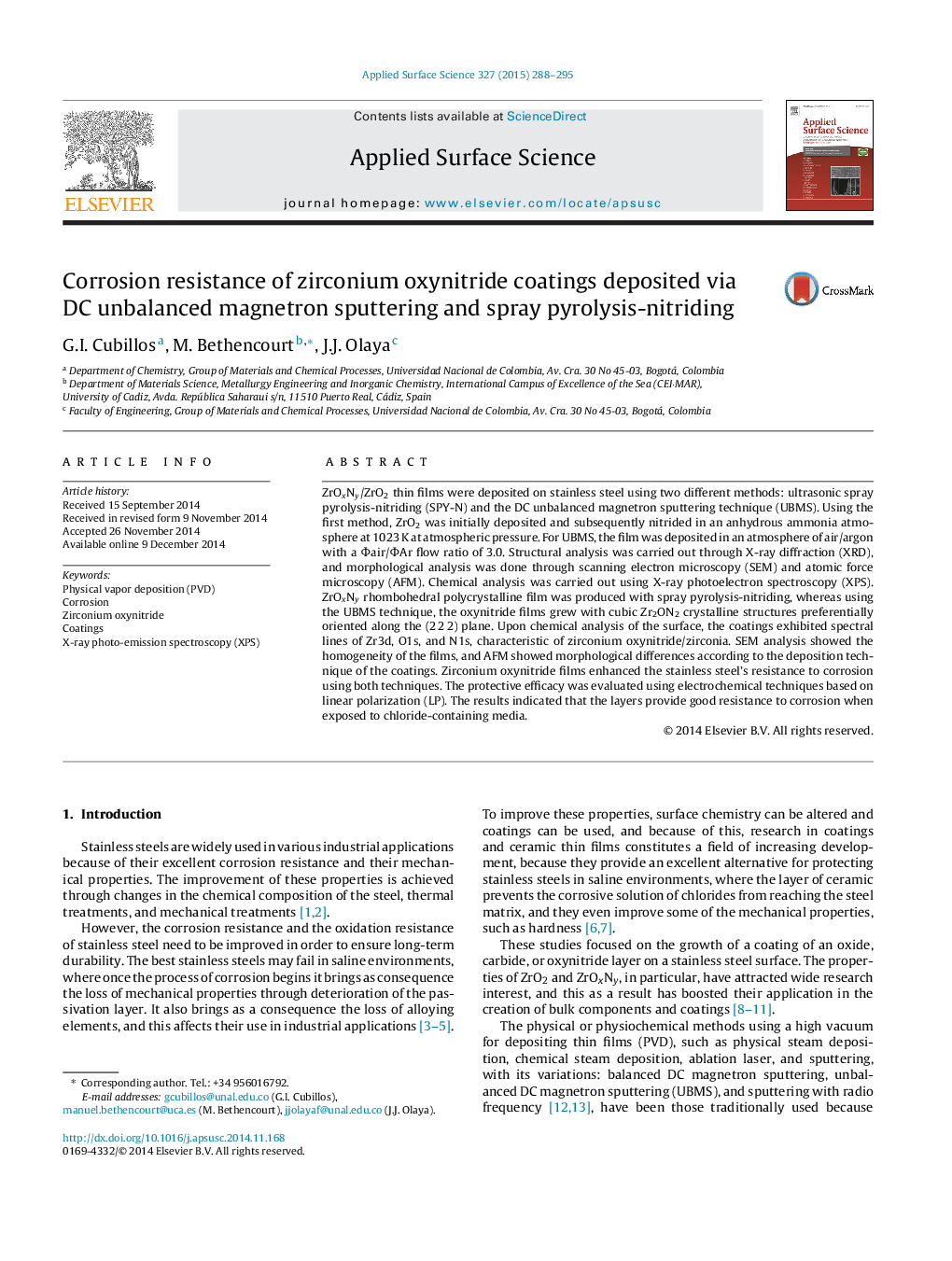| Article ID | Journal | Published Year | Pages | File Type |
|---|---|---|---|---|
| 5357594 | Applied Surface Science | 2015 | 8 Pages |
Abstract
ZrOxNy/ZrO2 thin films were deposited on stainless steel using two different methods: ultrasonic spray pyrolysis-nitriding (SPY-N) and the DC unbalanced magnetron sputtering technique (UBMS). Using the first method, ZrO2 was initially deposited and subsequently nitrided in an anhydrous ammonia atmosphere at 1023 K at atmospheric pressure. For UBMS, the film was deposited in an atmosphere of air/argon with a Φair/ΦAr flow ratio of 3.0. Structural analysis was carried out through X-ray diffraction (XRD), and morphological analysis was done through scanning electron microscopy (SEM) and atomic force microscopy (AFM). Chemical analysis was carried out using X-ray photoelectron spectroscopy (XPS). ZrOxNy rhombohedral polycrystalline film was produced with spray pyrolysis-nitriding, whereas using the UBMS technique, the oxynitride films grew with cubic Zr2ON2 crystalline structures preferentially oriented along the (2 2 2) plane. Upon chemical analysis of the surface, the coatings exhibited spectral lines of Zr3d, O1s, and N1s, characteristic of zirconium oxynitride/zirconia. SEM analysis showed the homogeneity of the films, and AFM showed morphological differences according to the deposition technique of the coatings. Zirconium oxynitride films enhanced the stainless steel's resistance to corrosion using both techniques. The protective efficacy was evaluated using electrochemical techniques based on linear polarization (LP). The results indicated that the layers provide good resistance to corrosion when exposed to chloride-containing media.
Keywords
Related Topics
Physical Sciences and Engineering
Chemistry
Physical and Theoretical Chemistry
Authors
G.I. Cubillos, M. Bethencourt, J.J. Olaya,
